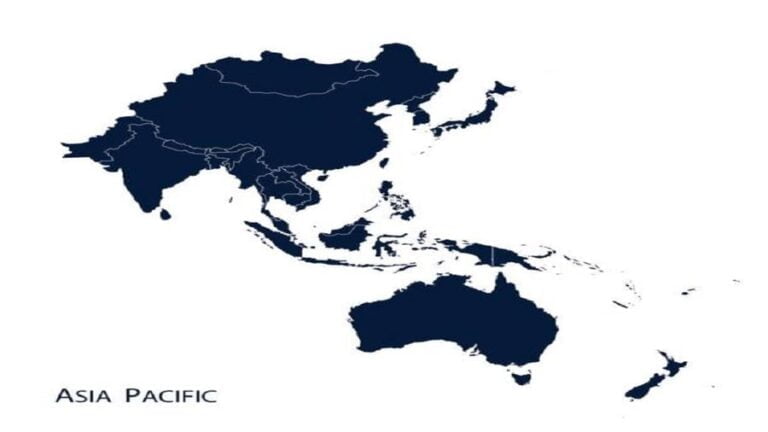NATO’s Tank Coalition Is an Escalation but Its Significance Shouldn’t Be Exaggerated
Both sides should refrain from indulging in so-called “copium” and stop spinning this move as being a game-changer or a damp squib since it’s neither. It’s veritably an escalation to be sure, but it also won’t lead to Kiev’s “inevitable” victory either. As Russian military expert Mikhail Khodaryonok recently said, “the battlefield is the only litmus test”, which everyone will soon watch unfold in real-time.
A Tangible Response To The “New Narrative”
The NATO countries finally agreed to form a coalition for dispatching modern tanks to Ukraine after some debate between them over this development, which represents the latest escalation in their proxy war on Russia. Kiev’s military capabilities will thus eventually be bolstered to the point where it might stand a better chance of breaking through the Line of Control (LOC) that’s remained frozen for the most part of the past half-year with few exceptions, those of course being in Kharkov and Kherson Regions.
The timing of this move is important since it extends credence to “politically incorrect” observations about the real military-strategic dynamics of this conflict that the US-led Western Mainstream Media (MSM) had hitherto covered up until recently. Prior to mid-January, the “official narrative” was one of Kiev’s supposedly “inevitable” victory, but American, Polish, and even some Ukrainian officials coordinated to decisively shift it to one where they now seriously worry about Kiev’s possible defeat.
Background Briefing
This narrative reversal took place amidst Ukraine’s increasingly destabilizing “deep state” dynamics characterized by the security services’ fierce infighting that even US state-run “Radio Free Europe/Radio Liberty” tacitly acknowledged by platforming the military intelligence chief who complained about this. That intrigue in turn catalyzed Zelensky’s de facto far-reaching purge of military, regional, and security officials earlier in the week, which appears to have successfully consolidated his power, at least for now.
The NATO countries therefore felt comfortable enough forming the earlier described coalition that they debated for the past month already since speculative opportunists and peaceniks within their proxy’s regime now stand less of a chance to offset their plans. About them, it remains unclear how much of the prior German-driven debate about this was sincere and to what extent it might have been stage-managed for perception management reasons in order to move the need of public opinion on this issue.
Supplementary Logistical & Political Goals
In any case, the outcome is the same, namely that NATO is escalating its proxy war on Russia through Ukraine through the formation of a tank coalition that could very well quickly evolve into one that soon dispatches other modern arms to Kiev like jets and long-range missiles. The reason for this prediction is that “mission creep” has clearly set in whereby that anti-Russian alliance is now driven to ensure a tangible on-the-ground so-called “return on investment” after already giving Kiev over $100 billion.
Their newly assembled coalition also advances important logistical and political goals alongside their obvious military ones. As for the first, it helps relieve well–known pressure upon their military-industrial complexes (MIC) by changing the nature of the arms dispatched to Kiev instead of risking the further depletion of existing stocks that have already run very low. Concerning the second, this so-called “burden sharing” strengthens the US’ recently reasserted hegemony over Europe.
Downplaying This Development
To segue into an explanation of why the significance of this escalation shouldn’t be exaggerated, observers should first be reminded that it’s taking place precisely at the time that Kiev is gradually being pushed back from Donbass after Russia’s liberation of Soledar. The on-the-ground military-strategic dynamics finally began to move beyond the prior impasse that largely characterized the past half-year and in Russia’s favor, hence the urgency with which NATO assembled its tank coalition.
Truth be told, this could in theory have happened at the onset of Russia’s special operation, but the US-led West’s Golden Billion was both unprepared for Moscow’s kinetic reaction to them crossing its national security red lines in Ukraine and also thought that they could cripple the Kremlin on the cheap. That’s why they dispatched outdated equipment from their stockpiles over the past year instead of immediately prioritizing modern arms like the tanks that they’re now about to send.
The reason why they’re now sending much more expensive and modern equipment is because Russia destroyed all those outdated arms that were already dispatched there. This observation confirms just how formidable its armed forces are that they were able to do away with such a large share of NATO’s stockpiles in less than a full year’s time while still managing to mostly freeze the LOC up until now. Since a ceasefire is politically out of the question for that anti-Russian alliance, they thus decided to escalate.
NATO’s New Proxy War Model
Under no circumstances can they de facto acknowledge Russia’s on-the-ground gains in what used to be Ukraine’s former eastern and southern regions since that would show that this Eurasian Great Power was able to successfully weather NATO’s unprecedented proxy war onslaught against it. The political consequences of doing so would expose the military limitations of this New Cold War bloc, which would thus reduce the chances that they can export their new proxy war model elsewhere in the future.
The aforesaid model that they pioneered throughout the course of the present conflict is novel in the sense of how it’s intended to escalate regional security dilemmas in order to ultimately tip the balance in NATO’s favor. To summarize, a smaller state’s military capabilities are rapidly built up with that bloc’s support in order to place it in a position of eventually blackmailing its larger neighbor, after which that targeted state is forced to either capitulate or take kinetic cross-border action to neutralize the threat.
The first would result in NATO inevitably coercing that larger adjacent state into a series of never-ending unilateral concessions aimed at ultimately neutralizing its strategic autonomy and thus turning it into a vassal state. The second, meanwhile, would immediately trigger NATO into rushing to its proxy’s support in the same way as it just did Ukraine in order to indefinitely perpetuate a proxy war aimed at eroding that larger adjacent state’s military capabilities in parallel with manufacturing the pretext for sanctions.
Russia’s Powerful Blow To NATO’s Proxy Plans
Russia is the current target of NATO’s new proxy war model, but China and Iran are also expected to eventually come under its crosshairs upon this model’s perfection (or at least its tweaking) throughout the course of the Ukrainian Conflict unless they choose to capitulate first. That said, if this same model is discredited in Ukraine upon Russia proving that NATO’s regional proxy can’t defend the territory that it claims with their support, then other regional actors might balk at replicating Kiev’s proxy war role.
After all, they’d see that they stand to tangibly lose quite a lot by going along with that bloc’s regional proxy war plots instead of immensely win like NATO previously claimed that Ukraine “inevitably” would up until its American and Polish members decisively flipped the “official narrative” about this proxy war. Furthermore, other potential proxies already see that Russia destroyed NATO’s outdated stockpiles that were already sent to Ukraine, which means that the bloc now has less to spare for other proxies.
As it stands, NATO’s new proxy war model has already been dealt a powerful blow since Russia has successfully depleted its outdated stockpiles and thus resulted in that bloc having a lot less to give to others anytime soon until its MIC replenishes its losses, which is expected to take at least a few years. It therefore can’t be taken for granted that its dispatch of more modern arms will make much of a meaningful difference on the ground since Russia might very well destroy them too.
Keen Insight From Mikhail Khodaryonok
At this point it’s relevant to reference the insight recently shared by Mikhail Khodaryonok in his latest analysis for RT. That military expert compellingly argued that the number of tanks that are likely to be dispatched to Ukraine will be insufficient for seriously changing the dynamics along the LOC, though he also acknowledged that “The battlefield is the only litmus test for the advantages and drawbacks of any type of weapon or military equipment.”
He’s correct on both counts, though the larger strategic insight shared thus far in this analysis adds credence to Khodaryonok’s conclusion that the significance of this latest escalation shouldn’t be exaggerated since Russia has proven up until this point that it can manage such developments. Of course, the introduction of more modern arms into this proxy war is definitely a new factor that should be taken seriously, but it would have been more meaningful had it happened a year ago instead of now.
Kiev’s Last Chance
The timing of this development suggests that it’s being resorted to as a desperate last-ditch effort to at least ensure that the LOC remains frozen after the military-strategic dynamics finally began to move in Russia’s favor upon it gradually making tangible progress in Donbass following Soledar’s liberation. NATO hopes that it’ll be a game-changer by enabling Kiev to reverse this latest trend and thus recapture some of the territory that it claims, but that outcome can’t be taken for granted as was explained.
If the dispatch of more modern tanks to Ukraine fails to achieve NATO’s minimum objective of at least freezing the LOC, then it can’t be discounted that it might soon send more modern jets and long-range missiles too out of panic to preserve the bloc’s reputation that would risk being ruined by Russia’s gains. Global perceptions of this US-led alliance would be shattered if Moscow continues making tangible on-the-ground progress in spite of those more modern tanks that the bloc sent to Ukraine.
Concluding Thoughts
The worst-case scenario is that NATO might formally intervene in the conflict (whether multilaterally or just via Poland) to establish a clear-cut red line in the sand somewhere within the rest of rump Ukraine if its more modern tanks, jets, and long-range missiles all fail to stop the Russian steamroller. It’s too early to confidently predict that those events will unfold, but it’s also equally too early to dismiss them out of hand too, especially when considering NATO’s military, political, soft power, and strategic calculations.
As the title of this analysis declared, the anti-Russian tank coalition is thus indeed an escalation but its significance shouldn’t be exaggerated either. Both sides should refrain from indulging in so-called “copium” and stop spinning this move as being a game-changer or a damp squib since it’s neither. It’s veritably an escalation to be sure, but it also won’t lead to Kiev’s “inevitable” victory either. As Khodaryonok said, “the battlefield is the only litmus test”, which everyone will soon watch unfold in real-time.







